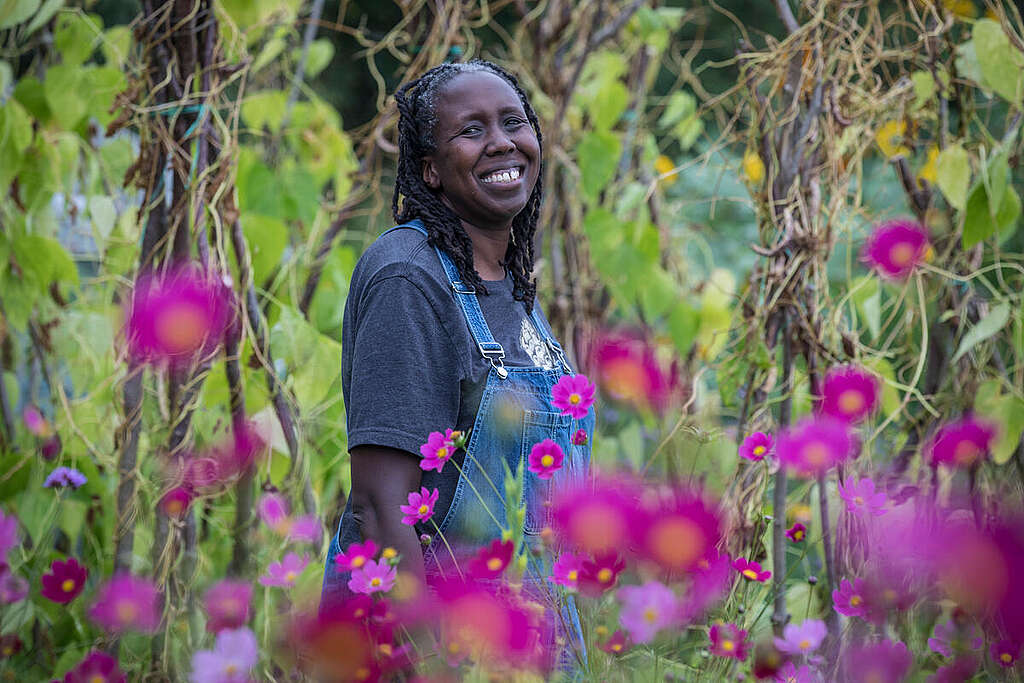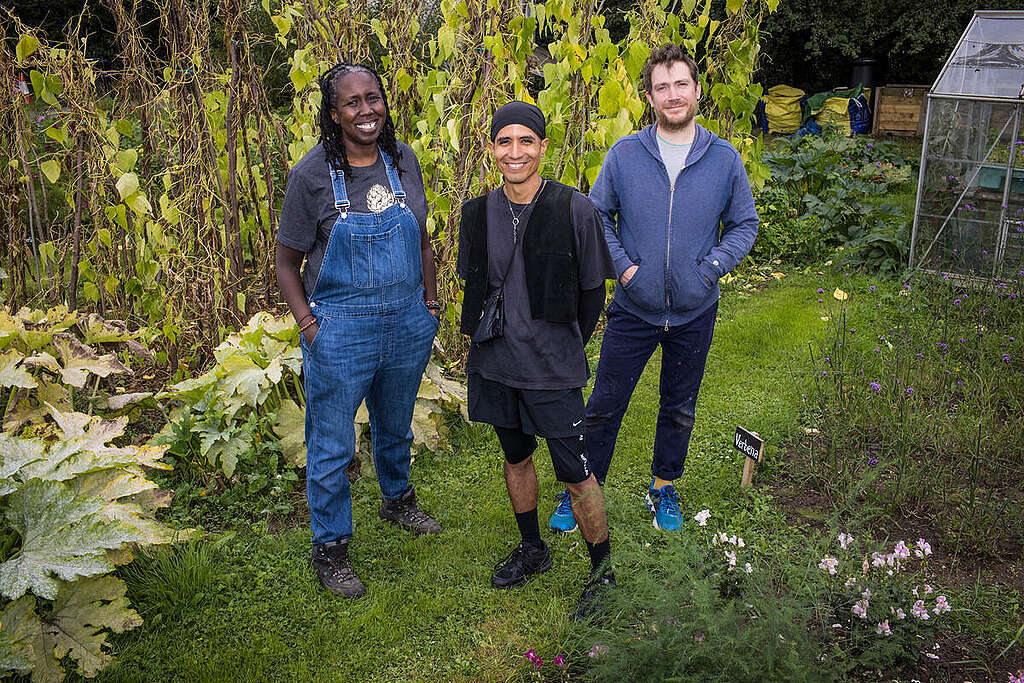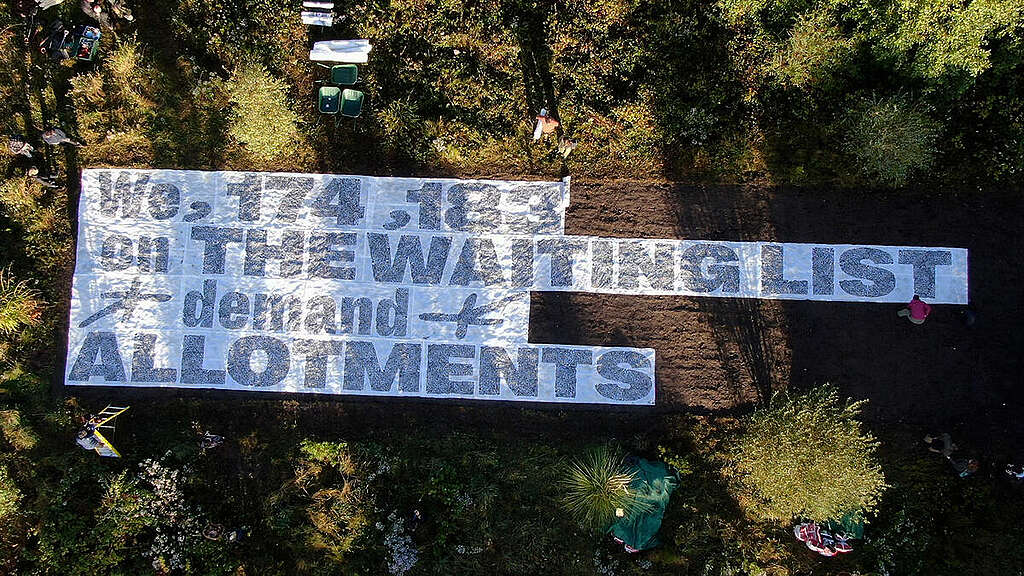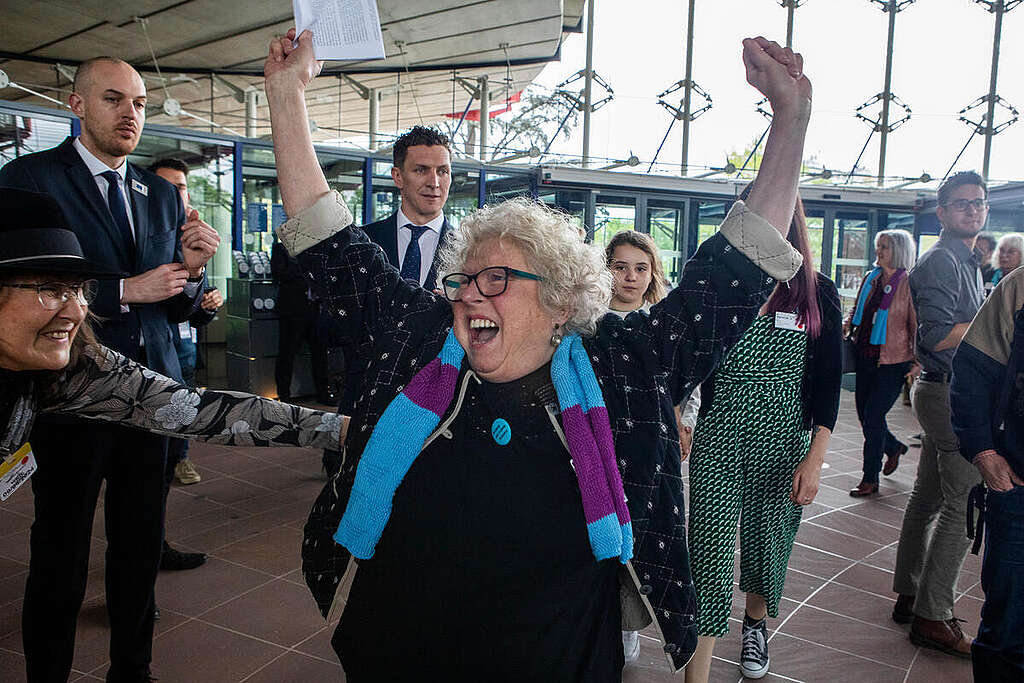Citizen Climate is an on-going series about global citizens taking action, big and small, for the sake of a healthier planet for us all.

The citizen: Dr JC Niala is a writer, historian and artist, based in the UK. She combines her creative and public engagement work with research, and is regularly produced in Kenya, the UK and the US.
The action: Created and worked on ‘The Waiting List’, a creative project with Julia Uteras and Sam Skinner from fig.studio, in collaboration with Greenpeace UK (as part of their Bad Taste project). The initiative was a call to action, bringing to light the urgent need for easier access to allotments, a small piece of land that can be rented to grow fruits and vegetables in the UK, and the importance of these spaces in communities.
Allotments and the ability to grow our own food is the people’s subversive fight against the industrialised food system, and the damage it is wreaking on biodiversity, people and the planet.
The collective created an immense artwork the size of an allotment plot (about the size of a doubles tennis court) that incorporated sheets of tissue paper sprinkled with brown mustard, white clover, sunflower, red fescue, and rye grass seeds. It also incorporated burnt Amazon rainforest ash Greenpeace had provided, as a symbol of the violence and destruction globally caused by the industrial food system. The seeds and ash spelt out the message “We, 174,183 on the waiting list demand allotments”.
The completed artwork was unfurled in front of the Department of Levelling Up in London before being dug into a Tesco-owned lot in Liverpool to reclaim it from the industrial food system – the seeds now germinate and flourish.

How did you get your start in art and activism?
It began in 2008 with a transformative collaboration in Nairobi with a group called Youth Reform. We initiated an organic farm project on what had been a dumpsite in Kibera, often mislabelled as Africa’s largest slum. In order to get the site ready for growing on we used sunflowers for phytoremediation to address the soil’s high zinc levels. Witnessing the sunflowers bloom was a pivotal moment for me. It highlighted how beauty and art can be formidable allies in sparking change and engaging communities in environmental activism.
I read that your doctoral research is on allotments, can you tell us briefly what they are in the UK and why they are important?
Allotments in the UK are these wonderfully quaint yet vital plots of land, often rented for a small fee from local authorities, allotment associations or less commonly privately from individuals. They’re about the size of a doubles tennis court, intended to cultivate fruits and vegetables, designed to feed up to four people. Beyond providing sustainable, fresh produce, allotments are important for urban biodiversity, community, and as sanctuaries for the promotion of mental and physical health. They’re educational hubs too, places where people of the city can learn about sustainable gardening and the environment.

What was the significance of the living artwork, in collaboration with Greenpeace UK, that was performed in October this year? What does the artwork hope to highlight?
‘The Waiting List,’ our living artwork with Greenpeace UK, was a stark representation of the challenges in accessing allotments in Britain. It underscored the distressing reality of the lengthy wait times – sometimes up to 15 years – which contradicts the statutory right to an allotment in Britain. This artwork was a call to action, bringing to light the urgent need for easier access to allotments and the importance of these spaces in our communities.
What are some possible solutions to the lack of allotment spaces? What can people do to demand for these spaces?
Addressing the allotment scarcity requires proactive measures from both local councils and the central government. Councils can repurpose unused land or acquire new land to develop more allotments. They need funding from the government to do this. And to enact this change, residents can leverage Section 23 of the 1908 Allotment Act by gathering six individuals from different households to formally request allotment spaces from their local council. We’ve seen successful examples of this during my research. Our artwork at Westminster was a symbolic act of making these demands on behalf of those on the waiting list.
What are some other resources for people living in urban spaces who don’t have allotments but want to grow their own food?
For those in urban settings without access to allotments, websites like Verticalveg.org.uk are excellent resources. Founded by Mark Ridsdill Smith, who himself was once on a long allotment waiting list, it offers creative solutions for container gardening, enabling city dwellers to grow their own food in limited spaces.
What role can art play in bolstering climate advocacy and action? What can artists do to help fight climate change?
Art has a unique power to make the daunting topic of climate change approachable and engaging. It’s about packaging solutions in a way that captivates and inspires, transforming fear and helplessness into positive action. As artists, leading by example in our own practices is vital. Being part of networks like Green Arts Oxfordshire not only fosters a supportive community but also amplifies our collective impact in driving meaningful change.
What change would you most like to see in the world?
My vision is for a world where everyone has access to nutritious, locally-sourced, sustainable, and organic food. Food that nourishes not just our bodies, but also the planet, without exacting a heavy environmental cost. This is about transforming our food systems into ones that are equitable, sustainable, and respectful of our Earth.

It’s time for all of us to assert our rights, demand climate justice, and a dignified way of life.
Take action